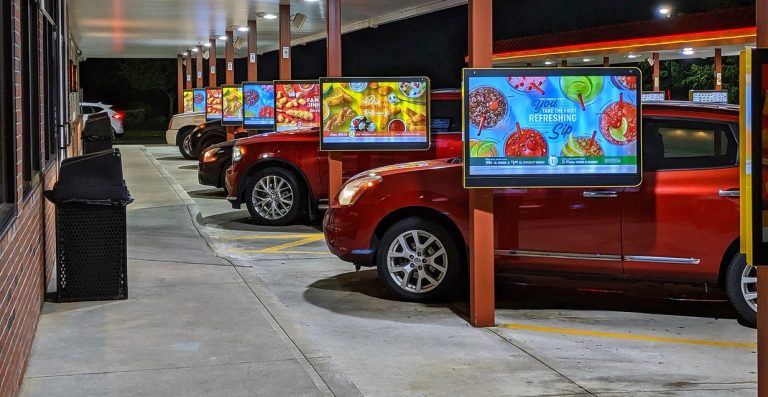Sonic on Using Digital Ordering and Payments to Engage Customers Across All Channels

QSR customers are back to ordering and dining in-person, but they’re expecting more than old-fashioned ordering methods. In the Order To Eat Tracker, Sonic’s Kim Lewis explains how mobile apps and digital tracking are a key part of the in-person ordering experience and help QSRs personalize product offerings.
It has become more important than ever for quick-service restaurants (QSRs) and fast casual restaurants to meet customers’ needs on each channel as their dining and payment patterns shift.
New technologies can enable restaurants to connect safely and seamlessly with consumers online, in person and everywhere in between. Some restaurants are deploying tools such as QR code-based menus that allow dine-in patrons to view offerings, order and pay in just a few simple steps. Many also have revamped the mobile ordering experience to keep customers loyal using features such as text messages and push notifications that offer coupons and updates.
Fast food chain Sonic has long been known for its 1950s-style carhop service, with patrons driving up to designated lanes, placing orders and receiving their food from servers car side.
The pandemic brought with it an increase in demand for contactless ordering and payment methods, prompting the eatery to adjust its operations to meet customers’ new needs.
Social distancing requirements have been a game changer in driving many of the chain’s longtime customers to give its mobile ordering app a chance, said Kim Lewis, vice president of integrated marketing and communications. Many who were intimidated by ordering via app and may not have realized the value in doing so changed their minds once they became familiar with the technologies.
“Now that customers are more comfortable with contactless purchasing methods, their expectations have risen,” she said. “A clunky experience may have been OK in early 2020, but the process must now be quick, seamless and intuitive, or customers will move on.”
Many consumers opted to pass on in-person dining during the early stages of the pandemic in favor of incorporating delivery and pickup options into their restaurant ordering routines. As a result, many chains have pushed to add more robust ordering and payment options to continue owning the customer relationship as third-party delivery platforms proliferate. Mobile apps that offer ordering and payment options, as well as in-store and drive-thru capabilities, including contactless purchasing methods such as QR codes, have become table stakes at many restaurants.
Lewis said Sonic has worked to personalize and digitize its in-person ordering experience by integrating interactive digital screens into every drive-in stall. Customers push a button to begin placing their orders, prompting the screen to display featured items and special offers. They then verify the items in their order as the switchboard operator enters them. Once this step is complete, they can choose to pay by swiping their credit cards through a built-in reader, using payment methods linked to the digital wallets in the Sonic app or simply handing cash to their servers.
The Future of Customer Interaction
Leveraging mobile tools to bridge the gap between in-person and digital ordering experiences is another key consideration for QSRs working to keep customers loyal. Lewis explained that one of the benefits of this approach is that it allows QSRs to personalize the experience with technologies that can help them better understand and anticipate each customer’s needs. Sonic also uses this functionality to give customers information and updates on their orders’ progress.
“After a customer places an app order, they check in [on the digital ordering] screen, which then welcomes them back by name, shows their profile image, lets them track their order’s progress in the kitchen and displays the name of the carhop on the way with their order,” she said.
Lewis said restaurants also can engage consumers by regularly communicating with them via text messages, email and branded apps to alert them to new products, promotions and rewards. In addition, incorporating loyalty programs with a digital focus can help QSRs satisfy customers across channels. She said Sonic, for example, has offered several promotions for customers who order via its app specifically to boost uptake and engagement, including a half-price “happy hour” for those who place mobile orders and a program that offers discounts and deals specifically for educators.
Innovation never stops as customers’ ordering and payment preferences change, and Lewis said restaurants will need to continue incorporating the latest technology both to keep longtime patrons engaged and to earn new ones. Some restaurants are examining options such as offering early access to new items exclusively via app, giving customers more ways to earn rewards or introducing new store formats that lean heavily on offering digital experiences.
“Digital ordering continues to exceed our expectations with growth in both adoption and usage,” she said. “We will continue to adapt to the ways our customers use technology to make the experience personalized and frictionless.”
The past two years have ushered in a wave of change for QSRs as consumers break down digital barriers and look to incorporate mobile payment and ordering tools into every facet of the dining experience, in person or not. Savvy restaurants must integrate digital tools into every step of the process to ensure they can anticipate and satisfy customers’ ordering and payment needs, no matter the channel.
